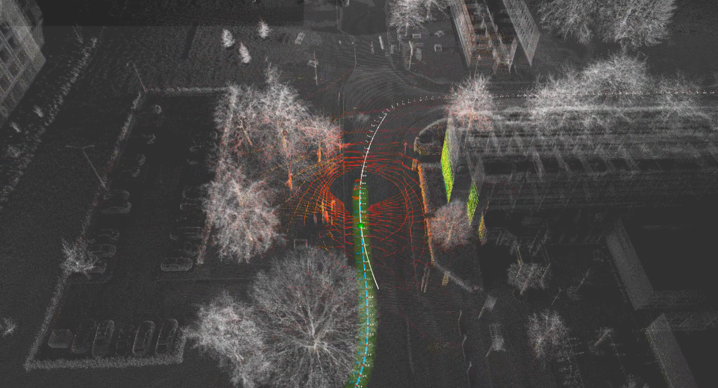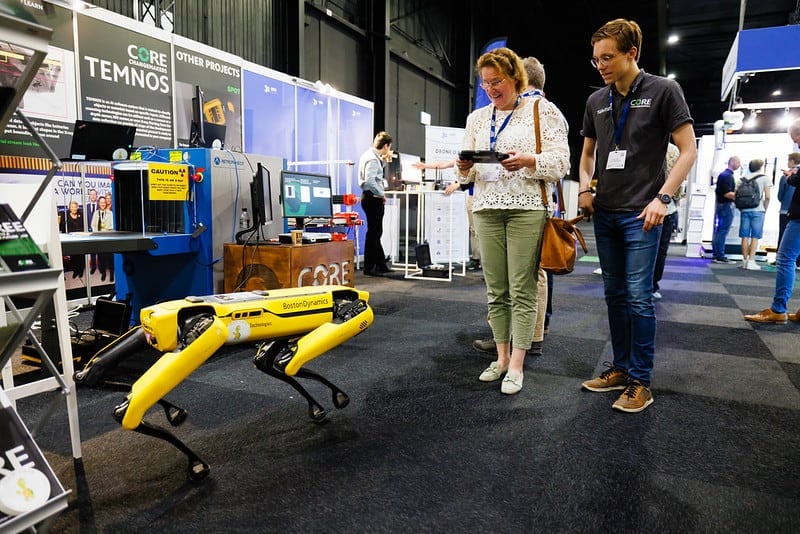
Gijs Dubbelman became enamored with artificial intelligence during his studies. Fifteen years later, as co-founder and CTO of AIIM (AI in Motion), he is still busy working every day on making systems more intelligent. “At AIIM, we develop flexible and robust systems that are able to perceive and anticipate their environment.”

During his research for the Mobile Perception Systems lab which he himself leads at the Eindhoven University of Technology (TU/e, the Netherlands), Dubbelman has noticed that the technology is often so mature that it no longer needs any more scientific research. “But it’s also not the case that there is a ready-made product. We jumped into that void with AIIM three years ago.”
The start-up is a spin-off from the investor Navinfo Europe (a company specializing in digital maps for the automotive industry) and TU/e. That Dubbelman likes the fact that he is able to put his scientific research directly into practice at AIIM at the TU/e. “Universities are very transparent; we publish all of our research results. You can see how companies make use of them and how they benefit from them too. That’s great, of course, but we can also benefit from AIIM now.”

Prototype of a self-driving car
AIIM comprises two sections: next-gen mobile robotics and the provision of support to the local mobility industry in the Brainport region. For that last section, AIIM has developed a prototype of a self-driving vehicle. Aboard the vehicle is a complete infrastructure of networks and software. “Companies design a bit of AI software that solves a specific problem within a larger chain. We integrate their piece of software into our vehicle so that they can test their technology in the bigger scheme of things,” Dubbelman says.
Intuitive navigation
The prototype also provided AIIM with an opportunity to test its own AI technology. “We started looking at where we want to use our own technology. In the automotive sector, we have to compete with major car brands that have whole AI departments, while we in the AGV (Automatic Guided Vehicle) sector can actually make a difference.”
AIIM is consequently focusing on the application of AI in the AGV sector. The goal is to bring a new generation of robots to the market: the Autonomous Mobile Robot (AMR). These robots navigate intuitively, which makes them more flexible and robust, unlike their predecessors.
Dubbelman cites robot automation in warehouses as an example. “The robots are already there, but we are making them smarter. Most AGVs driving around now do so over fixed routes and are programmed down to the last millimeter. Essentially, they’re pretty dumb systems,” says Dubbelman. “As soon as something goes wrong, everything grinds to a halt.”
Mapping, localization and object recognition
Object recognition and mapping the robot’s environment are the two most important aspects in AGV automation. Localization is a classic technology that enables robots to drive from A to B. AIIM is mainly putting its efforts into the first aspect: assigning meaning to objects. “We train an artificial network to recognize objects in images. We do that by showing them thousands of examples of a pallet, for example, so that the network can recognize these on its own in the future.”
Confidence building
AIIM supplies the software to the AGV manufacturer, who ultimately sells the robots to the end customer. “For both AIIM and the AGV manufacturer, it is still very much a question of how much the end customer is willing to pay for a new generation of automatic AGVs,” says Dubbelman. In addition, the end customer also needs to gain confidence in the AI technology.
“A huge challenge,” Dubbelman points out. “A company is not going to invest millions if it is not sure whether the technology is 100 percent reliable. So, together with our partners, we have to run several projects to prove that our technology works. That can’t be done without subsidies. Therefore, it is important to establish connections with national and European subsidy projects. Brainport plays an important role in facilitating this.”
Turbulent start
AIIM has had a turbulent start: the first year was all about getting going, and then a global pandemic broke out. Now the start-up is in its third year, and Dubbelman is seeing that more and more opportunities are presenting themselves. Within the next two years, the technology of AIIM will have to become truly mature.
“We can only accomplish that together with AGV manufacturers who believe in us, so that we will develop an end product that we can jointly sell to an end customer.” In five years, Dubbelman hopes there will be just under one thousand AGVs driving around European warehouses with the AI from AIIM.
You can read Carlo de Weijer his thoughts on AI and mobility here.







